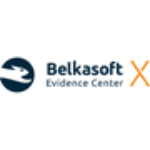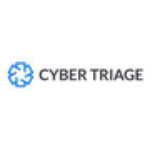List of Best Digital Forensics Software
Showing 10 of 14 productsMagnet AXIOM Cyber is a advanced digital investigation platform designed to streamline and enhance the digital forensics process. With its powerful capabilities and user-friendly interface, it enables investigators to quickly and effectively access a...Read Magnet AXIOM Cyber Reviews
E3:Universal is the all-in-one software solution designed to revolutionize the way businesses operate. With its advanced features and seamless integration, E3:Universal offers unprecedented efficiency and productivity. Say goodbye to multiple softwar...Read E3:Universal Reviews
Belkasoft Evidence Center X is a digital forensics and investigation tool designed for law enforcement, government agencies, and private sector investigators. It offers an unparalleled set of features and capabilities to quickly is a ly collect, anal...Read Belkasoft Evidence Center X Reviews
EnCase Forensic is a trusted and powerful digital investigation software used by professionals worldwide. With enhanced data acquisition and analysis capabilities, EnCase Forensic provides the necessary tools to efficiently and accurately extract evi...Read EnCase Forensic Reviews
Cellebrite is a widely recognized leader in the field of digital intelligence solutions. With advanced technology and a wealth of expertise, Cellebrite provides a range of reliable, efficient and secure solutions that help law enforcement, government...Read Cellebrite Reviews
Cyber Triage, a powerful digital investigation software, is revolutionizing the way cyber incidents are handled. With its advanced analysis capabilities, Cyber Triage allows for quick and accurate data collection and investigation, providing invaluab...Read Cyber Triage Reviews
Passware Kit is a password recovery software designed to help individuals and businesses gain access to passwords-protected files and systems. Its easy-to-use interface algorithms make it a top choice for recovering passwords for various applications...Read Passware Kit Reviews
Quest IT Security Search is an innovative software that provides advanced security solutions for businesses. With its advanced technology, it helps organizations in identifying and addressing potential threats, ensuring the safety of sensitive data...Read Quest IT Security Search Reviews
Barracuda Forensics and Incident Response is a solution for businesses looking to effectively handle potential security breaches. With state-of-the-art technology and expertly designed processes, Barracuda can quickly is a ly detect, contain, and inv...Read Barracuda Forensics and Incident Response Reviews
Falcon Forensics is a solution for all your digital investigation needs. With its advanced technology interface, Falcon Forensics streamlines the process of extracting, analyzing and reporting evidence, making it the go-to choice for forensic experts...Read Falcon Forensics Reviews
- What Is Digital Forensics Software?
- Top Reasons Why Businesses Need Digital Forensics Software?
- What Are the Top Key Features of Digital Forensics Software?
- What Are the Top Benefits of Digital Forensics Software?
- What Are the Steps to Choose the Right Digital Forensics Software?
- What Are the Types of Digital Forensics Software for Different Industries?
- What Are the Technology Trends for Best Digital Forensics Software?
- What Are the Deployment Options for Digital Forensics Software?
What Is Digital Forensics Software?
Digital forensics refers to the systematic procedure of retrieving and scrutinizing data from various digital devices such as computer systems, mobile phones, and other forms of digital media, with the objective of identifying pertinent evidence.
Digital forensics software (DFS) refers to a collection of computer tools specifically developed to effectively identify and retrieve data in a manner that adheres to forensic principles and standards.
This tool possesses the capability to retrieve erased data, conduct forensic analysis on computer system images, and examine instances of digital crimes such as intellectual property infringement. To ensure forensic integrity, Digital Forensic Specialists (DFS) must adhere to stringent protocols governing the collection of evidence.
For instance, it is crucial to ensure that the system under investigation remains unaltered. This implies that the collection of evidence must be conducted in a manner that does not compromise the integrity, availability, or confidentiality of the data. Best digital forensics software is basically comprised of many utilities, including internet history viewers, email viewers, file viewers, and digital imaging tools.
The aforementioned utilities possess the capability to restore data that has been destroyed and examine digital artifacts. Moreover, they can be employed for the purpose of examining certain categories of digital offenses, like cyberstalking, identity theft, and cyberbullying.
In summary, digital evidence management softwaer refers to a collection of utility tools specifically developed to systematically identify and retrieve data from digital media while adhering to forensic principles. This technology is employed to facilitate the examination of digital offenses, as well as the retrieval of erased data and the analysis of digital artifacts.
Top Reasons Why Businesses Need Digital Forensics Software?
1. One objective is to oversee staff computer usage in order to mitigate the risk of data loss or theft.
2. The primary objective is to ascertain and examine potential instances of security breaches or unauthorized usage of computer systems.
3. In order to conduct an examination of digital evidence for prospective civil or criminal litigation purposes.
4. In order to retrieve deleted files, emails, or other digital information from specific systems.
5. In order to investigate possible instances of malware or virus contamination, including cryptoviruses, an analysis will be conducted.
6. In order to identify indications of online harassment or inappropriate behavior.
7. To focus specifically on atypical network traffic within your organization's infrastructure.
8. In order to ensure the security of clients' digital data.
9. In order to precisely identify the origin of a data breach or security event.
10. In order to detect and identify instances of harmful attacks, hacking attempts, or unethical utilization within business networks.
11. The primary objective is to offer a comprehensive analysis of forensic evidence and identify instances of harmful activity.
12. In order to facilitate the legal pursuit of those engaging in hostile activities and identify vulnerabilities inside a company's security infrastructure.
13. In order to reveal concealed papers, track online usage, and provide a precise representation of user behavior within the corporate network.
14. The primary objective is to gather and evaluate digital evidence pertaining to instances of fraud, bribery, and corruption inside corporate settings.
15. In order to evaluate the possible consequences of cyber risks and develop efficient measures for their prevention or reduction.
What Are the Top Key Features of Digital Forensics Software?
The top key features of digital forensics software include:
1. Data Acquisition: The capacity to obtain digital investigation software from various storage media, including hard disk drives, flash drives, and forensic photographs of mobile devices.
2. Analysis: This paper discusses several methods and approaches employed in the identification, filtering, and analysis of evidence, with the aim of achieving optimal levels of accuracy and trustworthiness.
3. Reporting: The capacity to thoroughly record and document the outcomes of analysis, encompassing the preservation of unprocessed data, chains of evidence, and trails of audit.
4. Authentication: The process of ensuring the integrity of digital evidence involves employing cryptographic algorithms to identify any potential tampering.
5. Recovery: There exist robust recovery solutions that possess significant capabilities in the recuperation of data that has been erased or corrupted on digital media.
6. Automated Triage: Automated algorithms are employed to expeditiously and precisely discern dubious information inside extensive datasets.
7. Visual Inspection: A visual depiction of data that enhances the comprehension and analysis of digital evidence.
8. Hashing: Various technologies can be employed to generate a distinct identifier for individual files, with the aim of safeguarding the integrity of data contained within computer systems.
9. Timestamp Analysis: The utilization of timestamping procedures to precisely monitor and examine the chronological details of modifications occurring within digital evidence.
10. Logging: The capacity to comprehensively record system and user activities in order to identify potentially suspicious behavior, facilitate analysis, and aid in digital investigations.
What Are the Top Benefits of Digital Forensics Software?
Some of the top benefits of digital forensics software include:
1. Quickly discovering evidence – Digital forensics software enables investigators to efficiently search extensive repositories of electronic data in order to promptly discover crucial information.
2. Identifying unknown data elements – Through the application of digital investigation software concepts and methodologies, investigators have the capability to reveal previously undisclosed or unrecognized information.
3. Recovering hidden digital evidence – Through the utilization of forensic analysis techniques, investigators have the capacity to unveil concealed digital data that could otherwise prove challenging to locate.
4. Obtaining accurate results – The utilization of digital forensics software offers investigators a streamlined and economically viable method to precisely obtain and analyze evidence.
5. Documenting digital evidence – Digital forensic software solutions have the capability to comprehensively record digital evidence in a manner that is readily comprehensible, hence facilitating its effective presentation within a court of law.
6. Analyzing digital activity – The utilization of the best digital forensics software enables the evaluation of digital activity with the aim of identifying potential novel associations with individuals involved in criminal activities or those who may be considered suspects.
7. Investigating malicious entities – Digital forensics software has the capability to detect and track malevolent entities and processes that could potentially be employed for illicit purposes.
8. Establishing links between various devices – The utilization of digital evidence software enables the establishment of connectivity across many electronic devices for investigative purposes.
What Are the Steps to Choose the Right Digital Forensics Software?
1. Determine the scope of the digital investigation: In order to make an informed decision regarding the selection of digital forensics software, it is imperative to first ascertain the extent of the digital investigation. This entails identifying the specific sort of forensic investigation to be undertaken, as well as quantifying the volume of data that would necessitate analysis.
2. Identify the desired features and functions: The software's compatibility with various data and file formats, its ability to function within a networked environment, and its capacity to monitor and collect real-time data should be taken into consideration.
3. Analyze the legal ramifications: The examination of legal ramifications associated with digital forensics tools warrants significant attention. It is imperative to ensure that the software aligns with the stipulations outlined in local legislation and regulations pertaining to data protection and digital evidence.
4. Assess the cost and availability: It is imperative to ascertain that the financial implications of acquiring the software align with the allocated budgetary resources, while also ensuring that the software is compatible with the pre-existing systems in place.
5. Evaluate user reviews and ratings: Consulting reviews and ratings from reputable sources such as academic publications, reputable websites, and user forums can provide an impartial assessment of the mobile phone forensics software's performance, aiding in the determination of its suitability for meeting one's specific objectives.
6. Identify a professional to provide support: In order to guarantee the seamless functionality of the software, it is imperative to additionally ascertain the availability of a proficient individual capable of delivering support and maintenance services, should the need arise.
7. Test the software: After the process of narrowing down the available software packages to a select few, it becomes crucial to conduct thorough testing of each option in order to assess its functionality and determine its suitability for fulfilling the criteria of the digital forensics inquiry.
What Are the Types of Digital Forensics Software for Different Industries?
There exists a diverse array of digital forensics software applications that cater to various businesses. Several widely used categories of digital forensics software include computer forensics software, mobile forensics software, network forensics software, and database forensics software.
Computer forensics software is utilized in the examination of laptops, personal computers, and other electronic equipment, whilst mobile forensics software enables the scrutiny of cell phones, mobile gadgets, and even tablets.
Network forensics software is employed for the purpose of examining network traffic, logs, and additional data in order to detect security breaches or irregularities. Database forensics software is employed for the purpose of examining the contents of databases, detecting indications of fraudulent activities or cyber-attacks, and doing additional investigative tasks.
Furthermore, apart from the aforementioned digital forensics tools, there exists a plethora of industry-specific software packages. Digital forensics software is frequently employed by financial organizations for the purpose of fraud detection, cyber-attack investigation, and financial data analysis.
Digital forensics software is utilized by law enforcement authorities to conduct investigations into cybercrimes and reveal digital evidence. Best computer forensics software is utilized by healthcare companies to conduct investigations into breaches of patient data, as well as to detect instances of healthcare fraud and other related activities.
Irrespective of the sector, digital forensics software is an indispensable asset in safeguarding sensitive information and ensuring the maintenance of security measures.
What Are the Technology Trends for Best Digital Forensics Software?
The current technological advancements in digital forensics software primarily revolve around the areas of automation, distributed computing, and advanced analytics. There is a growing emphasis on the eradication of manual procedures in order to guarantee the precision and punctuality of outcomes.
The utilization of automation has become prevalent in expediting the processing of extensive volumes of data and enhancing the uniformity of investigative procedures. The utilization of distributed computing has become prevalent in the analysis of extensive data sets with the objective of revealing patterns or gaining valuable insights.
The utilization of advanced analytics is employed to extract deeper insights from data that are beyond the capabilities of standard analysis. Furthermore, the utilization of cloud-based platforms is being employed to facilitate safe access and storage of forensics software, while also enabling expedited access to analysis and insights.
What Are the Deployment Options for Digital Forensics Software?
Digital forensics software is software designed to procure, analyze, and present digital evidence found on computer systems and devices.
Deployment options for this type of software include:
1. On-Premise Deployment: This pertains to the utilization of digital forensics software that is stored on either local workstations or servers. The maintenance of the system necessitates the presence of IT personnel and the provision of the requisite IT infrastructure.
2. Cloud Deployment: This pertains to cloud-hosted best digital forensics software. This obviates the necessity of IT personnel to uphold the system, necessitates reduced infrastructure, and generally exhibits more scalability.
3. Hybrid Deployment: This term pertains to the integration of both on-premise and cloud-based deployments. This enables enterprises to implement the best computer forensics software in a setting that is most suitable for their requirements.
4. Mobile Deployment: This pertains to the utilization of top digital forensics software on mobile devices. This enables investigators to gather evidence from any location and at any point in time.










